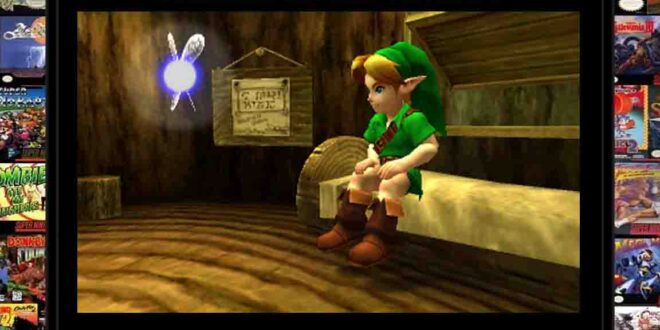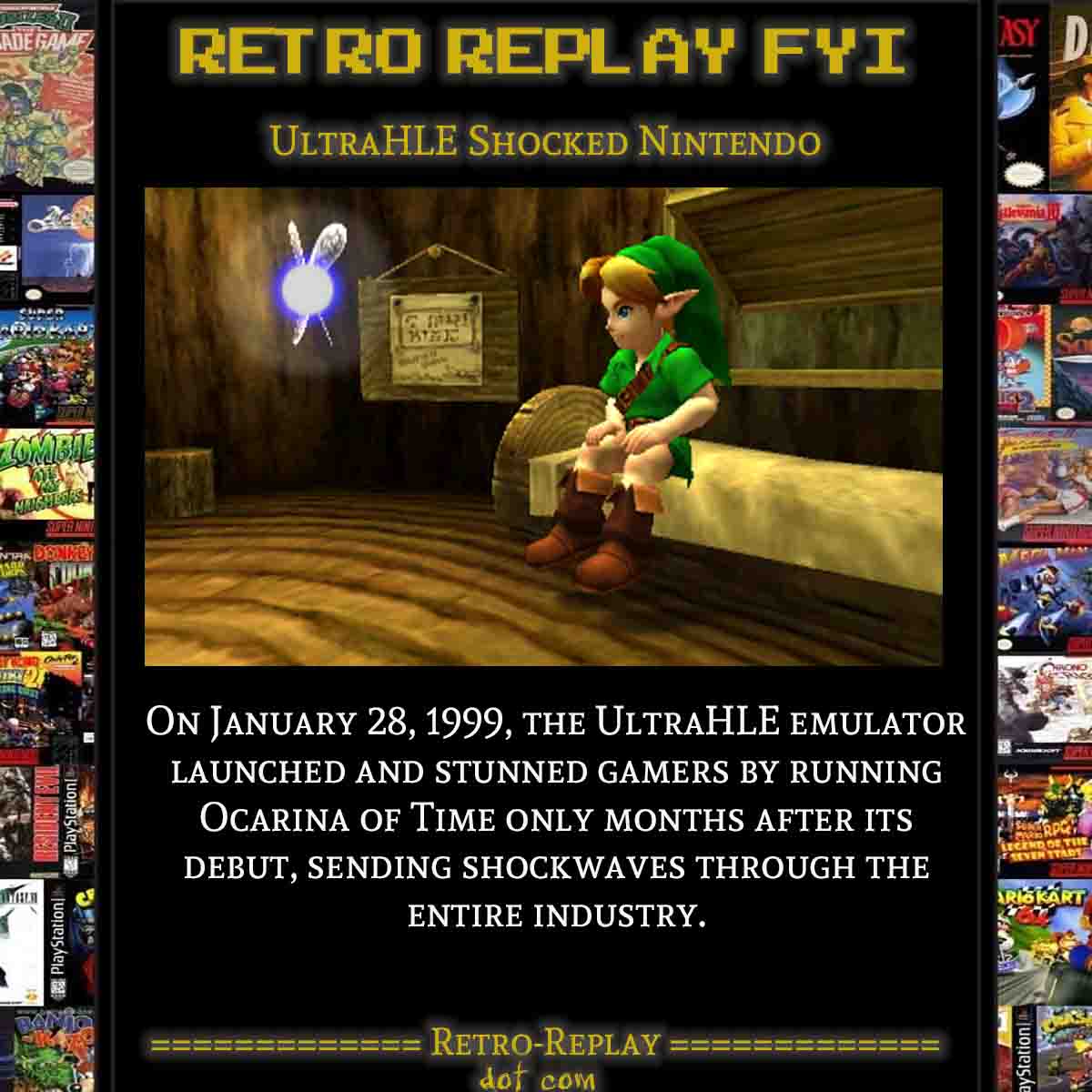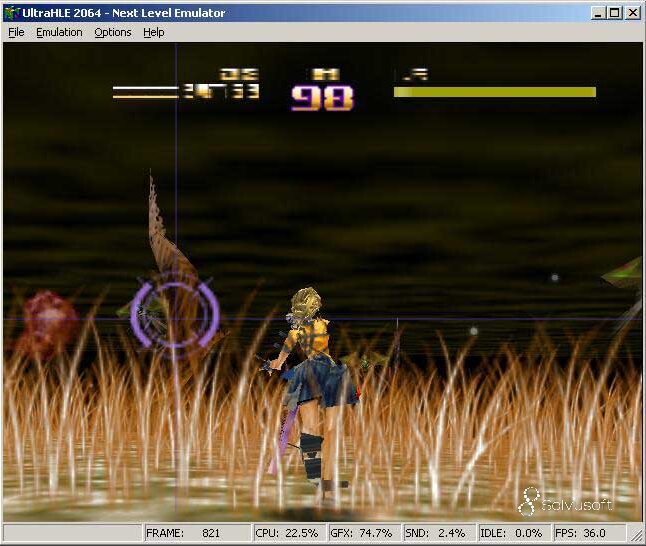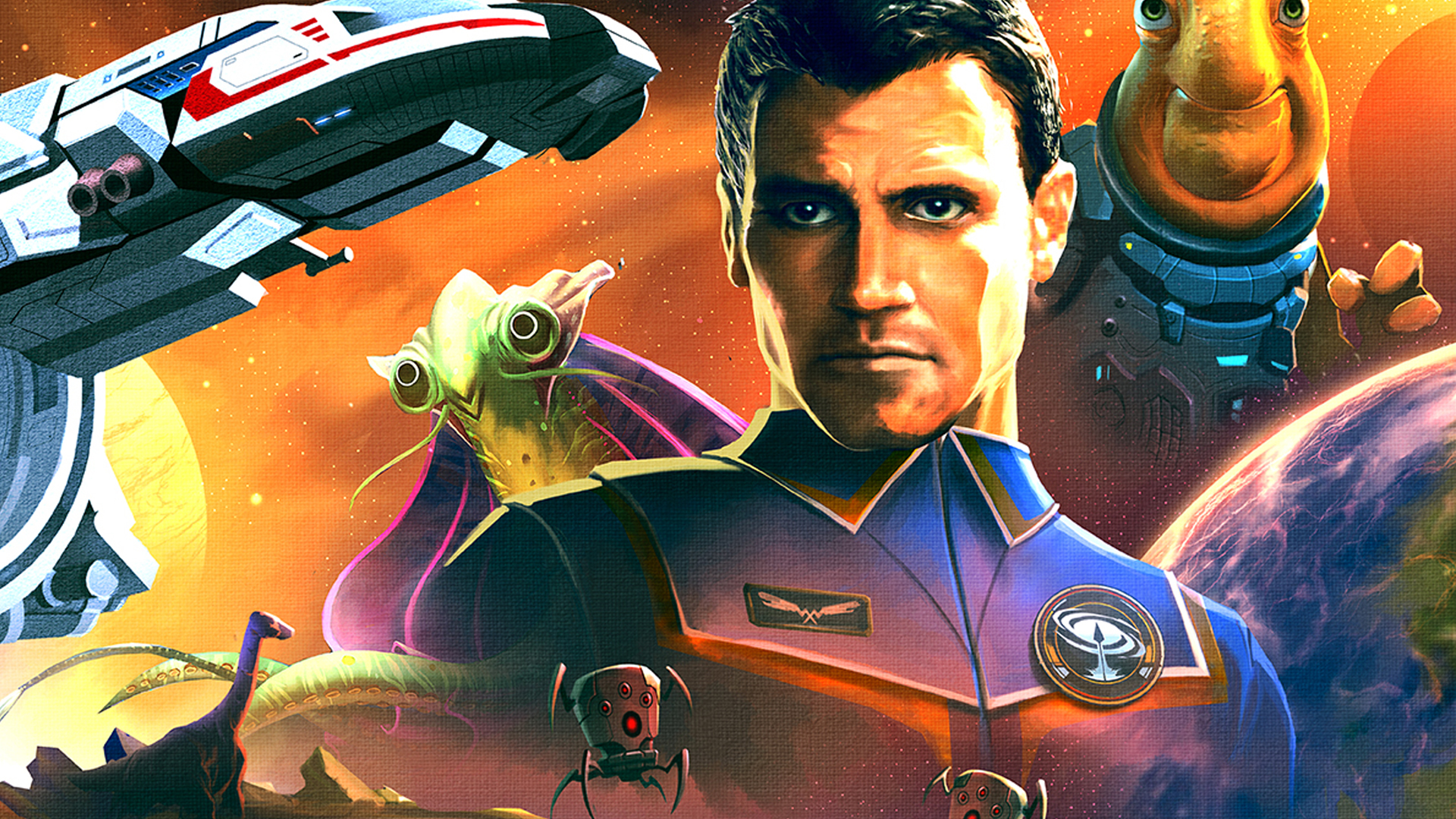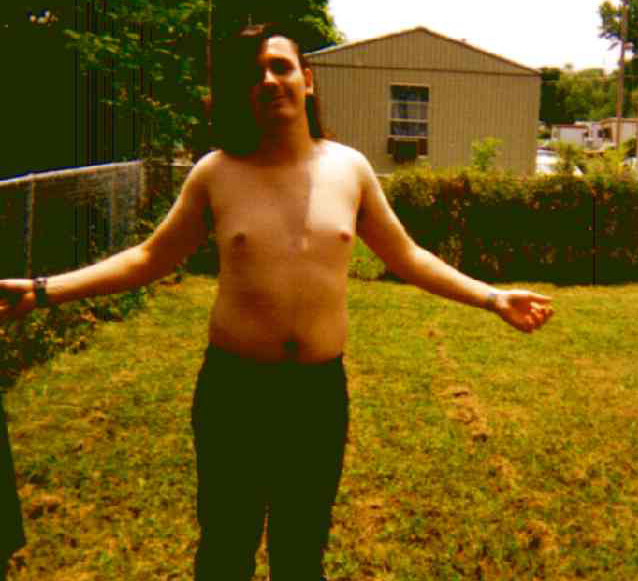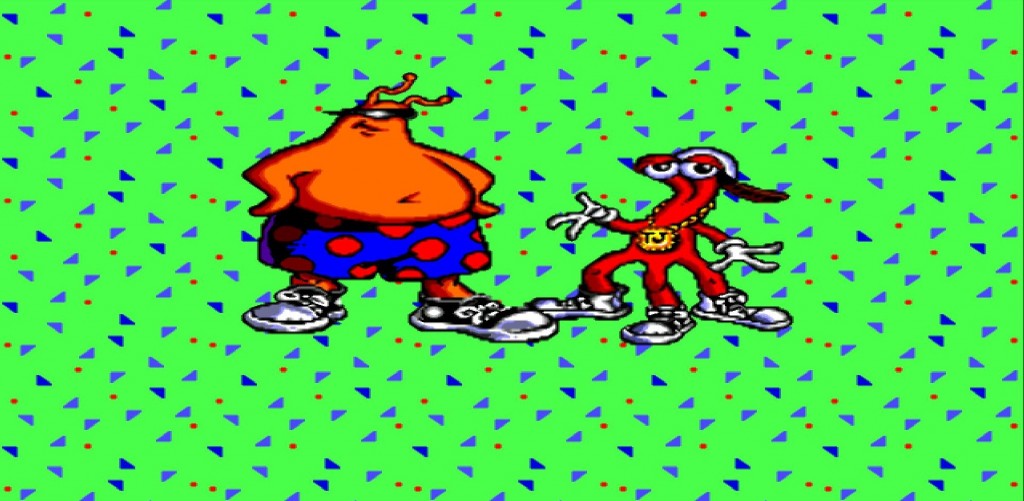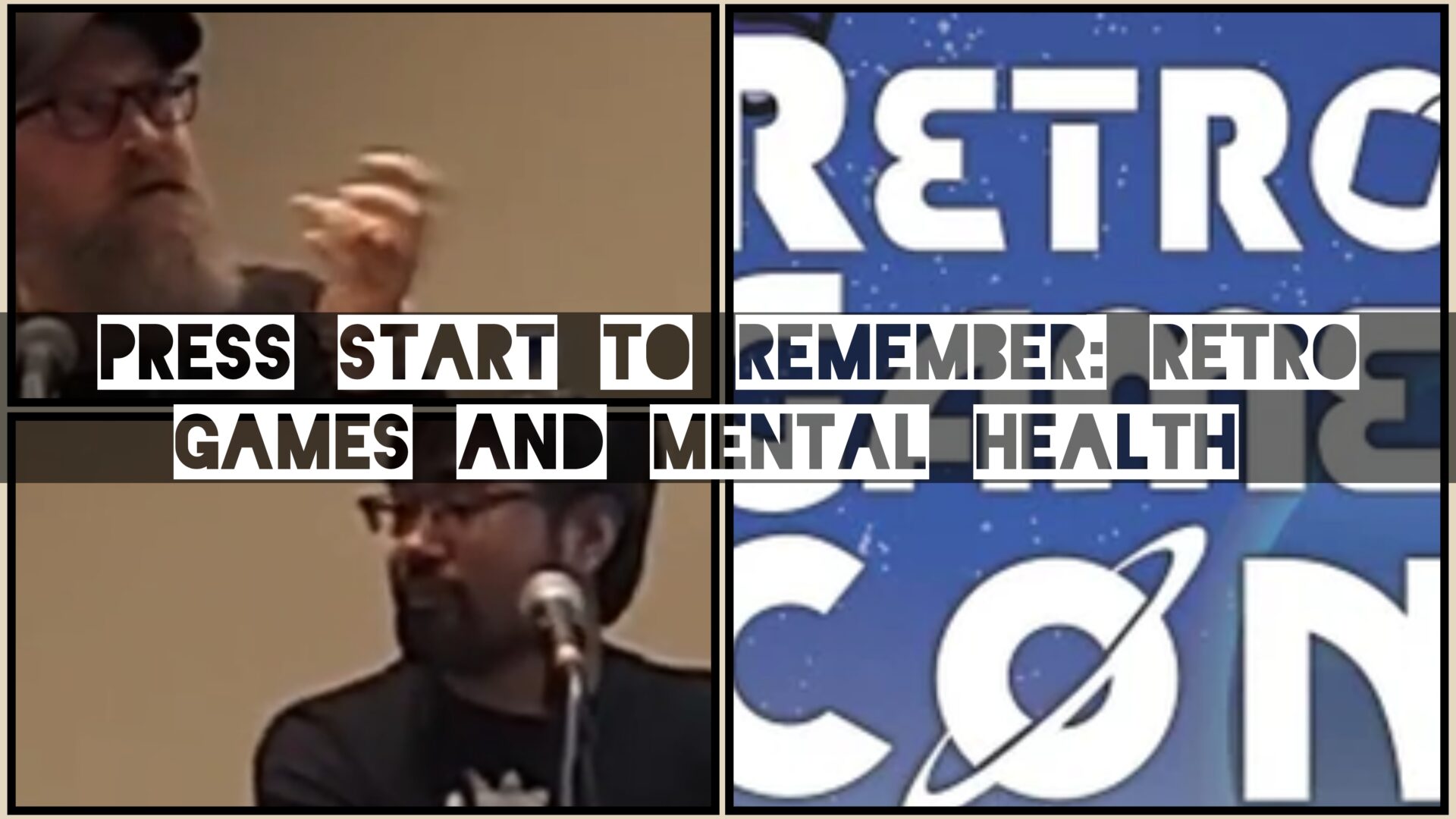The Day Emulation Changed Forever
On January 28, 1999, the UltraHLE emulator launched and stunned gamers by running The Legend of Zelda: Ocarina of Time only months after its release, sending shockwaves through the entire industry. Before this, most players assumed that emulation could only cover older consoles like the NES or SNES. Suddenly, the hottest game of the year was running on an everyday PC, and the world of emulation would never be the same.
(HEY YOU!! We hope you enjoy! We try not to run ads. So basically, this is a very expensive hobby running this site. Please consider joining us for updates, forums, and more. Network w/ us to make some cash or friends while retro gaming, and you can win some free retro games for posting. Okay, carry on 👍)
UltraHLE was the work of two developers known by the aliases RealityMan and Epsilon. Unlike previous emulators, which struggled to mimic every tiny detail of a console’s hardware, UltraHLE introduced the radical idea of high-level emulation (HLE). Instead of simulating the Nintendo 64’s circuits instruction by instruction, it intercepted the game’s library calls and replaced them with streamlined equivalents designed for PC. The result was a leap in performance that no one thought possible at the time.
The launch of UltraHLE marked a turning point. For the first time, the latest console on store shelves was mirrored on PCs in a way that was accessible to everyday players. It was both a technological marvel and a flashpoint of controversy, reshaping how fans, developers, and companies thought about emulation.
What Made UltraHLE Different
Prior to UltraHLE, most emulators were slow, experimental, and aimed at older consoles. Programs like NESticle and ZSNES had already built loyal followings by making 8-bit and 16-bit classics playable on computers, but 3D consoles like the Nintendo 64 were another matter entirely. The complexity of rendering polygons, lighting effects, and sound in real time seemed out of reach for the average home computer.
UltraHLE shattered that assumption. Its high-level approach meant it did not need to duplicate the inner workings of the N64’s hardware at a one-to-one scale. Instead, it selectively replaced functions and built clever shortcuts, enabling demanding games like Super Mario 64 and Ocarina of Time to run at playable speeds on a modest Pentium II machine. What had once been theoretical suddenly became practical.
This was more than a technical trick. It demonstrated that emulation did not have to be chained to perfect accuracy to be useful. By embracing creative approximations, UltraHLE proved that a balance between authenticity and efficiency could open the door to a much wider audience. Gamers no longer had to imagine what N64 titles might look like on PC, they could see it firsthand.
The Shockwaves Across the Industry
The arrival of UltraHLE sparked immediate excitement among players. Internet forums lit up with posts about running 3D Nintendo hits on desktops. Screenshots circulated rapidly, showing off beloved games in higher resolutions than the console could manage. For many fans, this was the first glimpse of how emulation could enhance as well as preserve.
But the celebration was matched by panic from publishers. For Nintendo, this was more than a curiosity—it was a threat to the business model. If the flagship games of their still-current console could be played for free on a computer, what would stop sales from drying up? The fear was piracy, and UltraHLE became the poster child for everything the industry worried about emulation.
Nintendo quickly made its stance known. Although no direct lawsuit was filed, reports circulated that the company was considering legal action. Within hours of release, RealityMan and Epsilon voluntarily pulled UltraHLE from public distribution. But it was too late—the program had already spread across the internet. Even without official support, copies circulated widely, cementing UltraHLE’s reputation as both groundbreaking and forbidden.
The Debate Over Emulation and Piracy
UltraHLE became a lightning rod in the ongoing debate about emulation. On one side were players and preservationists who argued that emulators allowed broader access, new technical possibilities, and cultural preservation. On the other side were companies like Nintendo who feared that emulation would erode their control over software and cut into sales.
The truth was more complicated. While UltraHLE made piracy easier by allowing downloaded ROMs to run smoothly, it also proved that emulation was not only possible but desirable. Many players used it as a way to revisit games they already owned or to see how titles could look on better hardware. Others discovered Nintendo’s catalog for the first time through the emulator, becoming fans who might not otherwise have touched the console.
The UltraHLE incident also highlighted how far the law lagged behind technology. Emulation itself was not illegal, but distributing copyrighted ROMs was. This gray area left fans caught between admiration for the technical achievement and uncertainty about the legal consequences. The emulator’s short official life only added to its mythic status.
Legacy of UltraHLE
Though UltraHLE was pulled from the spotlight almost as quickly as it appeared, its impact was lasting. The emulator’s use of high-level techniques inspired a generation of developers who would go on to create more advanced programs like Project64. The concept of balancing accuracy with performance became a foundation of modern emulation, especially for systems where perfect cycle-by-cycle replication is impractical.
UltraHLE also shifted how the public viewed emulation. What had once been seen as a niche hobby for tech enthusiasts was suddenly a mainstream phenomenon. The sight of Ocarina of Time running on a computer changed perceptions overnight. It proved that emulation was not just about nostalgia—it was about expanding the possibilities of gaming itself.
For many fans, UltraHLE was their first encounter with emulation, and it left an indelible mark. It demonstrated that the worlds of consoles and PCs were not separate, and that creativity and curiosity could blur those lines. While Nintendo succeeded in shutting down its official distribution, the legacy of UltraHLE lives on in every emulator that followed.
A Defining Moment in Gaming History
Looking back, the launch of UltraHLE in early 1999 feels like a watershed moment. It was a point when the balance of power briefly shifted, when fans and independent developers proved that even the most advanced systems could be replicated and shared. For Nintendo, it was a wake-up call about the challenges of protecting intellectual property in the digital age. For the gaming community, it was a revelation about what was possible.
UltraHLE’s brief time in the spotlight left an outsized legacy. It showed that emulation was not just about archiving the past but about challenging the present. It gave players a taste of what gaming could look like beyond the boundaries of official hardware, and it raised questions that still shape the emulation scene today.
Even decades later, the story of UltraHLE is remembered not just for its technical brilliance but for the cultural shock it delivered. On that January day in 1999, the lines between console and computer blurred, and gaming was never the same again.
 Retro Replay Retro Replay gaming reviews, news, emulation, geek stuff and more!
Retro Replay Retro Replay gaming reviews, news, emulation, geek stuff and more!
